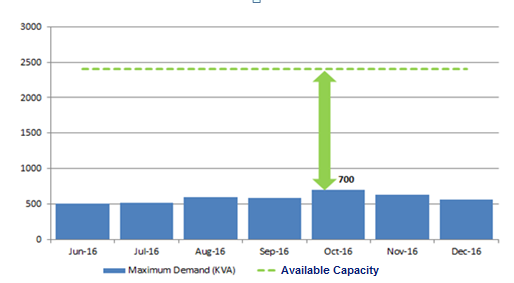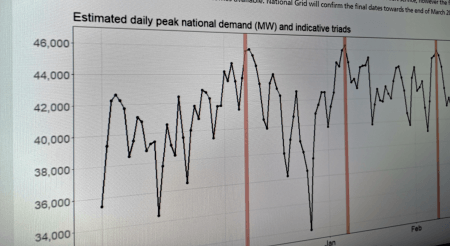
YOUR BITESIZED BILL GUIDE - Your Excess Availability Charge
Extra opportunities to manage costs and meet your budgets
As we enter the months of shorter, colder days most organisations tend to see their energy use increase. There is one upside to this is: your winter bills may help you understand your organisation’s maximum consumption needs so you’re better able to avoid an Excess Availability Charge and better manage your Available Capacity.
Let’s look at what this is and see how other organisations are taking steps to better manage their energy usage so they don’t have to pay it.
What is an Excess Availability Charge and how does your Available Capacity work?

Check out our latest video to find out they are, where to find them in your bill, and how they work.
How to crack it:
Rightsize your Available Capacity to downsize your bill
The way organisations control the charges around their Available Capacity is by closely matching the amount of energy they purchase to their actual consumption needs. Basically it’s about ensuring you’re not over- or under-buying. And we’re on hand to help you do just that. Here are two examples of how you might be able to save.
So you’re incurring excess availability charges, what should you do?
How to crack it:
Weigh up the cost of penalties versus increasing your capacity

Track how often, and by how much, you exceed your Available Capacity. We can lend you a hand to make an informed decision on your next step.
One council we worked with found that they were breaching their agreed availability capacity over four months in winter. They were incurring an Excess Availability Charge of roughly £100 a month. As a result, they asked us if they should up their capacity. In response, we took a look at their annual consumption - and worked out that an increase in capacity to accommodate those four months of over-consumption could cost as much as £6,000 over a whole year. On balance, they agreed that paying the penalty for the four months was actually the better option.
This might be different for your organisation. So do get in touch if you’re paying an excess availability charge and we can help you decide what to do
But what if you think you’re using less energy than you are paying for?
How to crack it:
Keep an eye on your Available Capacity over winter

Check your maximum demand vs your Available Capacity over time to see if you could make a saving.
On the flip side, some of our customers find that across their sites they could actually reduce their Available Capacity. Winter is a good time to gauge this because that’s when organisations consume the most energy and get closest to using their full agreed Available Capacity. If you’re consistently using less than yours, you could make a saving.
One example is a customer who had an agreed Available Capacity of 1000 kVA - but when we ran a Maximum Import Capacity Review for them it showed they were using roughly half of that across the year. A quick call with their Distribution Network Operator, and they reduced their capacity to 750kVA, which saved them roughly £10,000 a year and still gave them a buffer for the peak winter months.
You might well be in a similar situation, especially if you are in schooling,
And that’s it, a quick regular check in is all it takes. It’s good to know that you and your team could make some changes to when and how you buy and use energy which could perhaps result in some welcome reductions in your bill.
We hope these bitesized tips, ideas and changes help you do that. And as always, we’re here if you have any questions or need some help.
Want to know more? Watch our webinar "Be ready for changes to Maximum Import Capacity charges"
Watch also:
Distribution | Transmission |
Post a comment
Related articles

What the Energy Bills Discount Scheme means for businesses



